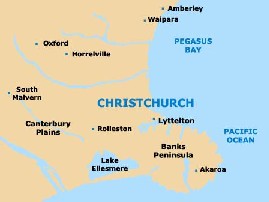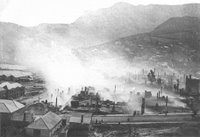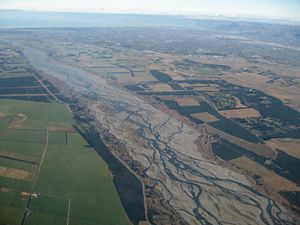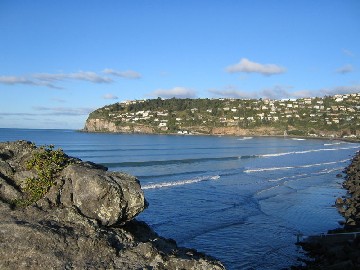

National Anthem God of Nations at Thy feet, Guard Pacific's triple star Men of every creed and race, From dissension, envy, hate, Peace, not war, shall be our boast, Lord of battles in Thy might, Let our love for Thee increase, From dishonour and from shame, May our mountains ever be Guide her in the nations' van, © Lotolux.com/NZ info 2009-2013 All rights reserved - Karin Oosterveen - Contact- Lotolux/NZ info is a non profit web site. All articals, images, and other works are copyrighted to the original owners. |
Christchurch |
|||||||||||||||||||||||||||||||||||||||||||||
Christchurch (Māori: Ōtautahi) is the largest city in the South Island of New Zealand,with about 358.000 residents and the country's second-largest urban area. It is midway down the South Island's east coast, just north of Banks Peninsula which itself, since 2006, lies within the formal limits of Christchurch. HistoryOverviewArcheological evidence found in a cave at Redcliffs in 1876 has indicated that the Christchurch area was first settled by moa-hunting tribes about 1250. Māori oral history relates that humans occupied the area around the year 1000. Christchurch became a city by Royal Charter on 31 July 1856, the first in New Zealand. Many of the city's Gothic buildings by architect Benjamin Mountfort date from this period. The city was named by the Canterbury Association, which settled the surrounding province of Canterbury. The name of Christchurch was agreed on at the first meeting of the association on 27 March 1848. It was suggested by John Robert Godley, who had attended Christ Church, Oxford. Some early writers called the town Christ Church, but it was recorded as Christchurch in the minutes of the management committee of the association. The river which flows through the centre of the city (its banks now largely forming an urban park) was named Avon at the request of the pioneering Deans brothers to commemorate the Scottish Avon, which rises in the Ayrshire hills near what was their grandfathers' farm and flows into the Clyde. The usual Māori name for Christchurch is Ōtautahi ("the place of Tautahi"). Christchurch lies in Canterbury, near the centre of the east coast of the South Island, east of the Canterbury Plains. It is located near the southern end of Pegasus Bay, and is bounded to the east by the Pacific Ocean coast and the estuary of the Avon as well as the Heathcote River. To the south and south-east the urban portion of the city is limited by the volcanic slopes of the Port Hills separating it from the Banks Peninsula. As of 2006, the Banks Peninsula was incorporated into the city, in effect tripling the city's land area while adding only about 8,000 people to the city's population. To the north the city is bounded by the braided Waimakariri River
Central CityAt the centre of the city is Cathedral Square, surrounding the Anglican cathedral, Christ Church. The area around this square and within the four avenues of Christchurch (Bealey Avenue, Fitzgerald Avenue, Moorhouse Avenue and Deans Avenue) is considered the CBD of the city. The central city also has a number of residential areas, including Inner City East, Inner City West, Avon Loop, Moa & Victoria. Cathedral Square is a popular destination and hosts attractions such as the speakers' corner made famous by the Wizard of New Zealand, Ian Brackenbury Channell, and evangelist, Ray Comfort. The central city includes the pedestrianised Cashel Street as Christchurch's urban mall. At one end of the mall stands the Bridge Of Remembrance; at the other end the amphitheatre known as the Hack Circle. DemographicsThe area administered by the Christchurch City Council has a population of 368,900 (June 2008 estimate), making it the second-largest in New Zealand, and the largest city in the South Island. The following table shows the ethnic profile of Christchurch's population, as recorded in the 2001 and 2006 New Zealand Census. The percentages add up to more than 100%, as some people counted themselves as belonging to more than one ethnic group. Figures for 2006 refer to just Christchurch City, not the whole urban area. The substantial percentage drop in the numbers of 'Europeans' was mainly caused by the increasing numbers of people from this group choosing to define themselves as 'New Zealanders' – even though this was not one of the groups listed on the census form.
The 2006 Census also provides information about the multilinguality of the region. Accordingly, 283,986 people in Christchurch City spoke one language only, while 37,947 spoke two, and 7,881 could converse in three or more languages.
|




